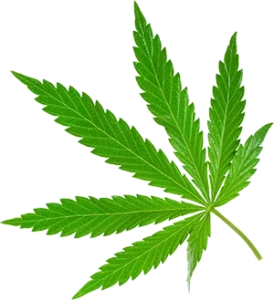Featured Products
CBD PRODUCTS


Be Pain Free Global is a trusted natural medicine provider making a difference in people’s lives worldwide.
Our reviews and testimonies speak for themselves. We focus on providing the best medicine and customer care for our clients
Learn more about our support process, how you can contact us at BPFG, and how we are here to help you.
We have a 10-business day replacement policy, and we take all inquires very seriously. We are committed to quality products for you.
The Ultimate Cannabis And Health Education Platform Presented By Be Pain Free Global.
At BPFG, we work hard on collecting relevant videos for cannabis consumer education.
Just cannabis? No. We are all about consciousness, vision, proper nutrition, and holistic health.
We have compiled great resources to help understand the benefits of cannabis for your health.
Check out what’s smoking on our strains and terpenes list. Featuring best strains curated by our editor.
Indica's are known for their calming and sedating properties, usually leading to munchies, and sleep.
Sativa's are known for their ability to produce energetic feelings and creating a positive uplifting euphoria.
Hybrids are a very popular with cannabis consumers due to the initial uplift followed by relaxation.
Every case is different and requires individualized care. We have some great tips for doctor reccomendations.
Join our collective with a valid California medical recommendation to gain access today
Get the details on how our affiliate program works and how you can benefit by referring others
Become a Be Pain Free Affiliate and earn lifetime commissions for your referrals

Cannabis use during pregnancy is a loaded topic, with many intense opinions offered. Let’s explore some of the known facts. Low levels of serum endocannabinoids correlate with successful pregnancies, but cannabis use also correlates with an increase in anovulatory (menstrual cycles without egg release) cycles as well as potential ovulatory delay and cycle inhibition. This is likely because increased circulating levels of THC may help to overcome the body’s attempt to decrease endocannabinoids after ovulation. Primary ovulatory delay is associated with an increased risk of infertility. In contrast, research shows that there is no association between cannabis use and fecundability, how long it takes to get pregnant. Cannabis may also be beneficial in hyperemesis gravidarum, a pregnancy disorder with persistent severe vomiting, leading to dehydration, electrolyte imbalances, miscarriage and death.
Cannabinoids and their metabolites cross the placenta, enter the fetal bloodstream, and are distributed in the fetal tissues, including the brain.There were concerns that their presence would be correlated with impairments in cognitive, behavioral, and emotional development, but research found any changes proved to be minimal and non-persistent. During pregnancy the endocannabinoid levels remain low, but at the onset of labor the levels of anandamide, the “bliss” endocannabinoid important in uterine contraction, increases by four times. Higher anandamide levels are linked to shorter delivery times.
The cannabis content of breast milk is 8x that of the mother’s serum. There has not been any evidence linking its presence to any disorder or dysfunction, but there is concern that they might negatively impact brain development. Because of this, in 2019 the American College of Obstetricians and Gynecologists position was to encourage abstinence during lactation, but not to consider cannabis use a contraindication to recommending breastfeeding.
Contrasting studies have found that human breast milk naturally contains many of the same cannabinoids found in marijuana, which are extremely vital for proper human development. Cannabinoid receptors are found on the membranes of every cell in the human body, and when these receptors are activated by cannabinoids and other nutritive substances they protect the cells against viruses, harmful bacteria, cancer and other malignancies. The endocannabinoids found in human breast milk are an abundant source of endocannabinoids that serve as a specific neuromodulatory lipid that basically teaches a newborn baby how to eat by stimulating the suckling process.
The two types of cannabinoid receptors in the body are CB1, which exists in the brain, and CB2 which exists in the immune system and throughout the rest of the body. These receptors respond to cannabinoids, whether they come from human breast milk or marijuana, supporting the concept that the human body was “made for” cannabis use. These substances play an important role in protecting cells against disease, boosting the immune system, protecting the brain and nervous system and relieving pain and inflammation, the primary cause of disease and aging. Because of all of these positive factors, there are many who believe that cannabis use during pregnancy and lactation supports health and wellness.
Clearly, the issue of cannabis use during pregnancy and lactation are very complex and there are often contraindicating advantages and harms. Open, honest conversation with your physician, your partner, and other important people in your life is where it should begin, but in the end this is your decision, and you are responsible for the choices you make. Make sure that you make informed ones.
Be Pain Free Global Is A Recognized Leader In The Medical Cannabis Space. If you would like to learn more about Be Pain Free Global, how to get your medical recommendation, or how to join our collective, you can reach out to us via the chat button on our website, or call us at 1-888-420-3848.